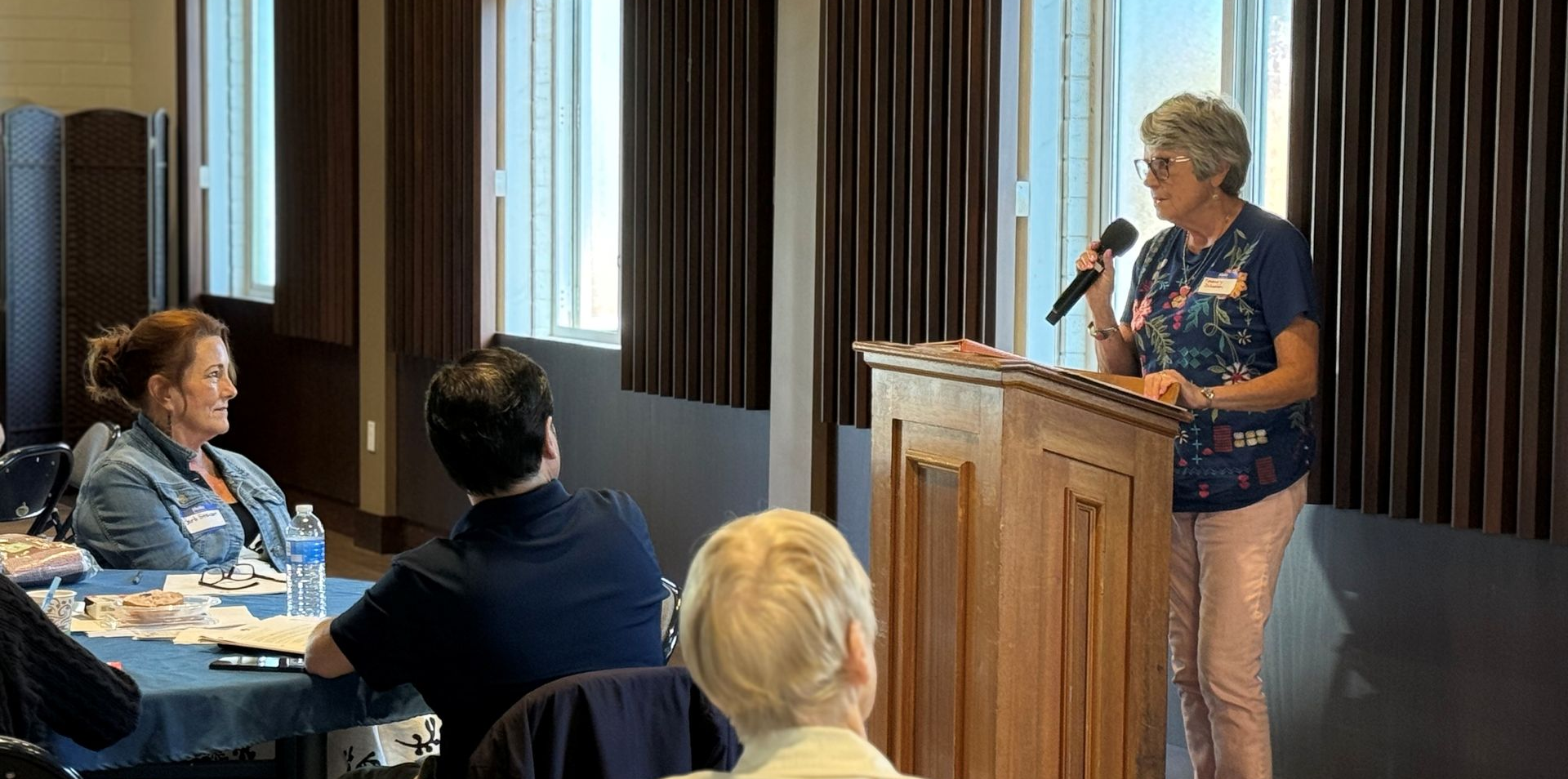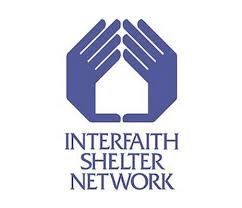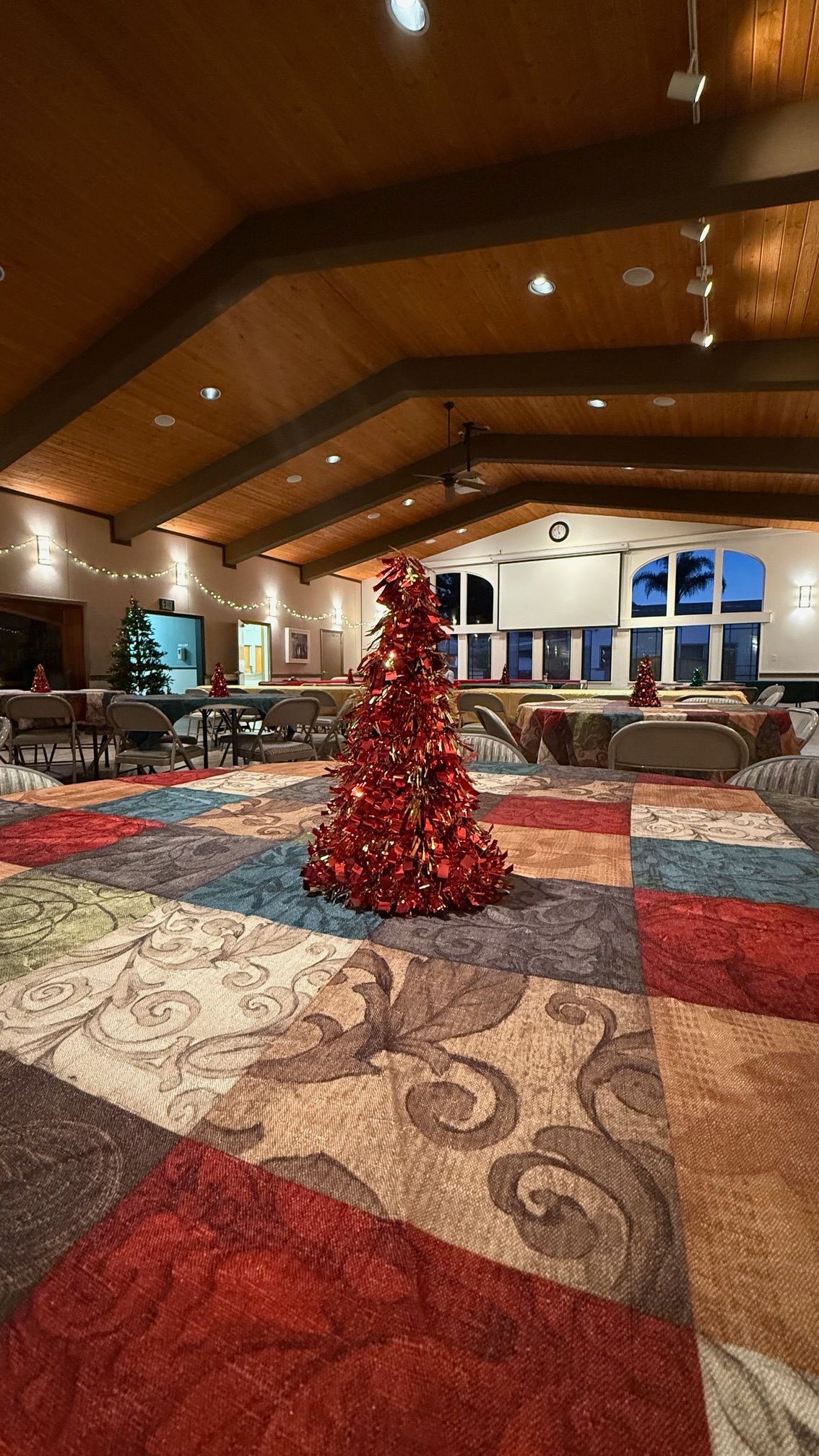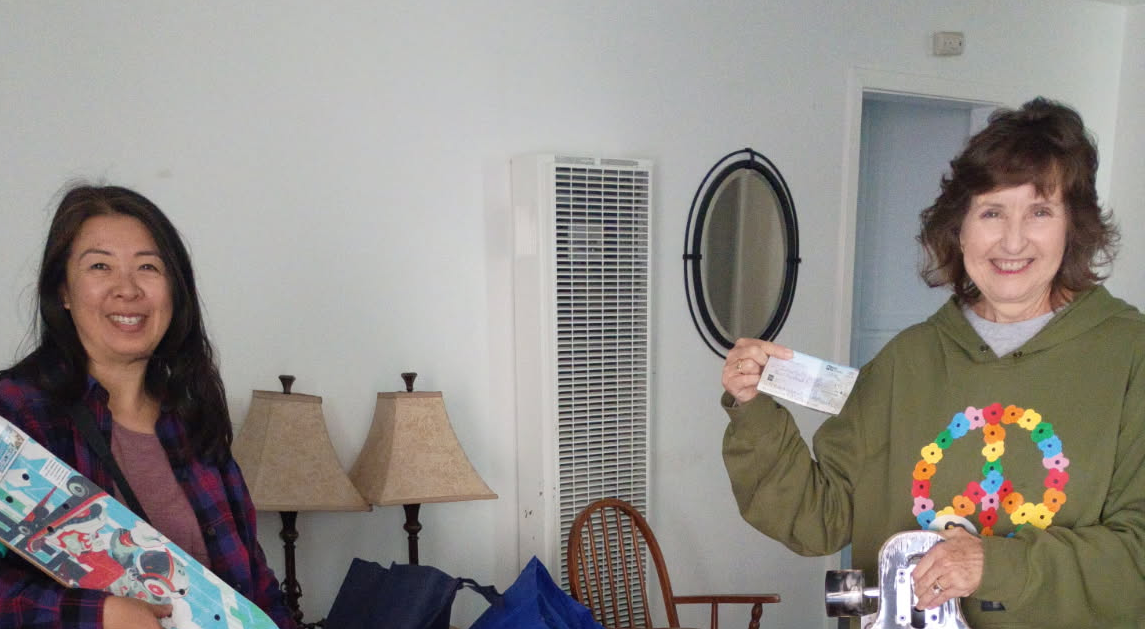Turning 40 & Looking Ahead
One of the Early Leaders of ISN Reflects on the Rotational Shelter's 40 Years of Service

Rosemary Johnston was one of the first advocates for the Rotational Shelter Program in the late '80s. After serving as a volunteer in the program for years, she stepped up as the Executive Director of ISN and led the organization with vision and passion. Rosemary was asked to speak at this year's Rotational Shelter Orientation as the program celebrated its upcoming 40 year legacy in San Diego. Take a moment with Rosemary's stirring reflections below.
October 4, 2025
Welcome to the launching of our 40th season of providing shelter, resources, and services to homeless individuals and families in the San Diego region. In addition to serving as executive director for the ISN for 17 years, I also served as congregational coordinator in my own faith community and an evangelist of sorts in the Network’s early years, seeking out and speaking at numerous congregations about the plight of the homeless community here and how they could help by providing shelter and other services.
I became interested in the shelter program after reading an article in the San Diego Union Tribune in 1987 about First United Methodist church in La Mesa sheltering homeless people.
I contacted the shelter coordinator and asked a lot of questions about how to organize the program and also contacted St. Dunstan’s Episcopal Church, which was also a host congregation at the time. I analyzed the facilities available at our congregation, identifying our youth room as an ideal site as it had an adjoining kitchen and bathroom facilities. Showers in an adjoining building could be utilized so that our guests could shower regularly during their stay.
I made an appointment with our new pastor to discuss the possibility. I described what was involved and pointed out the youth room as an ideal site, also noting the shelter would not be open during elementary school hours but only from evening til morning for two weeks. Various clubs in the parish could be invited to provide meals and overnight supervision. Cots would be provided; our only expense would be bus tokens for transportation during the day so our guests could look for work, remain employed if they had a job, and seek out permanent housing opportunities. My pastor listened respectfully and then said, ‘What about next year?’ My response was ‘what about this year?’. I think he was taken aback a bit, but he relented and gave me the go-ahead.
Working with the homeless community was an invaluable learning experience about the challenges people face when they lose their housing. They have no permanent address, for one thing. Today, many have cell phones, but not when the program first began to operate. Shelter guests often used their case manager’s phone number to give to potential employers or landlords. Utilizing public transportation was another major challenge, knowing they had to meet shelter curfew deadlines to check in around 6 p.m. every night. Building community with people they had never met before presented both challenges and opportunities. One client, an unemployed electrician, explained he had sold his tools as he descended into homelessness. He had an employment offer, but he needed certain tools. A parishioner, an overnight volunteer, donated tools from his extensive tool collection and took him to Home Depot, purchasing the additional essential tools at his own expense. A hand up, not a hand out. Oftentimes, shelter guests are struggling with depression and a lack of self-confidence. They arrive with more failures than successes in their lives. We have to give them space to share their stories and listen non-judgmentally while encouraging them to take advantage of the opportunity to know where their next meal is coming from, that they will have access to shelter indoors and showers, as well as budgeting and career planning classes, and case management.
Sometimes our volunteers recognized shelter guests as former high school classmates or as fellow Chargers and Padres fans. They may be parents and grandparents.
Our support congregations provided meals and overnight supervision, and I developed a menu so the guests were not being served spaghetti seven nights a week! Craig Ghio, owner of Anthony’s Restaurant and a member of our parish, provided steak and lobster one night! I had the schoolchildren draw welcome messages on placemats. One of them wrote, “I hope you find your house soon.” One Christmas, Temple Emmanu El in Del Cerro spent Christmas Day with our guests, playing basketball, watching football games together, feeding them, and staying overnight so our volunteers could enjoy Christmas with their families. Occasionally, I had to counsel a shelter guest about the rules, particularly not lingering around the parish property when school was in session unless they had an appointment in the parish office.
One time, my husband and I dropped by the shelter on Holy Saturday, the day before Easter. We spotted a man outside the food pantry and told him it was not open on weekends. Instead, we invited him into the shelter, gave him an opportunity to shower, and offered him used clothing. I couldn’t find any socks, and he said, ‘Sometimes we have so much stuff we don’t know what we have.’ I thought of the times I had to search for a particular item of clothing in my overstuffed closet. My husband went to a nearby store and purchased socks for him. I prepared a lunch for him, for which he was incredibly grateful. Dessert included an apple, and I realized too late that he had no teeth. I apologized profusely, but he said, ‘No problem, I just dip everything in hot water first if I can’t chew it.” After finishing lunch, he bade us farewell at the bus stop out front of our parish. As we turned to leave, he said, “Happy Easter.” We both felt as though we had just experienced a visit from Christ Himself.
Later, I would organize chaplaincy services for Project Homeless Connect, a one-day resource fair at Golden Hall for homeless people that attracted more than 700 people. After ensuring that my scheduled chaplain had arrived, I would roam around Golden Hall to see if anyone needed assistance. I saw a guy leaning precariously to the right side of his wheelchair. I tried to right him but realized his left wheel was missing a major bolt. “Is there anyone here who could fix it,? he asked me. There was no one, but I remembered that many handyman-type guys I know usually have what’s called a boneyard in their shed, collecting items they might need someday. I walked over to the facilities office and asked two custodians if they might have a bolt that would fit this guy’s chair. They came out to take a look at the wheel and returned with the bolt to screw on to the wheel. The man was overwhelmed with gratitude. Wheelchairs, I realized, are made for transportation, not to live in 24/7 as this guy was doing on the streets of downtown. I learned later that day that Father Joe’s Villages was able to enroll him in their shelter program.
When the city ran winter shelter tent programs, they would invite shelter providers like the Interfaith Shelter Network to set up a table and see if any of the tent residents might be a good fit for our programs. One gentleman stopped by to inquire how our shelter program worked. I introduced myself, and he shared his name with me. So how long have you been homeless? I asked. “I’m not homeless,” he said through his toothless grin. “I’m houseless. Home is where I am.” And I thought of the One whose name is, "I AM WHO I AM." And I thought of Jesus bemoaning the fact that “foxes have dens and birds have nests, but the Son of Man has no place to lay his head.” Luke 9:57-58
I suspect many of you could share stories as well about your gracious encounters with homeless people. And I acknowledge that not all of them may be gracious. And as this 40th anniversary approaches, it’s an appropriate time to reflect on the story of the Interfaith Shelter Network. Saul, David, and Solomon ruled for 40 years. Moses and Mohammad answered to call to become prophetic leaders when they were 40. In Islam, it is believed that the human brain takes 40 years to reach maturity. And the exiled Israelites wandered in the desert for 40 years before reaching the Promised Land. The number 40 signifies new life, new growth, and transformation, a change from one great task to another great task. The psychoanalyst Carl Jung once said that life really does begin at 40…up to then you are just doing research in preparation for self-becoming, a time of individuation. We become whole, integrating our hopes, dreams, fears, and wounds. The number 40 is mentioned 150 times in the bible.
At 40, the ISN Rotational Shelter Program has sheltered 11,180 homeless people without building any shelters. It has provided 313,000 bed nights of shelter, while the El Nido program, which opened in 1997, has provided housing and other services and resources to 150 families, a record to be proud of.
For the Rotational Shelter program, it is a time for new life and new growth. Numerous congregations no longer participate in hosting shelter guests, resulting in a significant decline in numbers served and a subsequent loss of bed nights provided. The COVID epidemic caused a critical blow to the way the program operates. Shelter guests could not be housed in congregate settings at local congregations but instead had to be moved into motels with catered meals rather than those provided by congregational volunteers. And volunteers and shelter guests could not be put in peril by gathering with people in assembly-type rooms at their facilities. Providing meals and critical companionship by Zoom just doesn’t work.
In addition, many congregations have experienced a serious diminishment in membership over the past decade as many elder members died but were not replaced by new and younger members.
Yet the need for these shelters has grown not diminished in the past 10 years, and data reveal more people are falling into homelessness than are finding shelter and becoming housed. In response, the Rotational Shelter has a full-time person devoted to recruiting new congregations and providing the training needed to operate them. And I see that the Network has a more robust set of grant funders than when I retired in 2013. I would suggest recruiting congregational coordinators and pastors as Network evangelists, reaching out to other congregations in their denominational structure, and suggesting they provide support initially to the host congregation to see how it is done. It may be that some of those served may be willing to speak at a local congregation about how the program helped them become self-sufficient again. At our parish, a shelter guest spoke after all the masses one Sunday, thanking the congregation for what he called its ‘uncritical’ compassion and hospitality. He said that one of his dreams was to enroll in a local community college and begin the process of obtaining an undergraduate degree. A woman in the congregation contacted me the following week and said she had cried all the way home and was willing to pay for his tuition. I put her in touch with that guest’s case manager to facilitate his dream of becoming a reality.
The El Nido program survived the loss of significant funding by the US Department of Housing and Urban Development not long after I retired when HUD decided to pivot from funding transitional housing programs which provide housing, case management and other services and resources to funding permanent supportive housing for the chronically homeless population, those who have been homeless a year or more or four times in three years and have a significant disability like substance abuse and mental illness. Yet thanks to the efforts of Network grant writers and the generosity of our donors, other funds were identified. Unfortunately, domestic violence remains a significant threat to families in our community, and the need for safe respite and an opportunity to rebuild their lives remains high.
What remains unchanged is the mission of the Network: to enable those we serve to move toward self-sufficiency by coordinating the efforts of participating congregations, social service agencies, and governmental programs in order to provide shelter and other resources to homeless individuals and families in the San Diego region.
What else remains unchanged is the dedication of Network staff in our Mission Valley office and at El Nido. I recently attended a retirement luncheon for Joe Zilvinskis, who served as Rotational Shelter coordinator and office manager for three decades. And I greatly enjoyed working with Maria Garcia at the El Nido program. Under Brandon’s leadership now, its future is in good hands.
The Network has achieved self-becoming. We know our niche in the web of homeless service providers. We are well respected in the provider community as a volunteer-driven program. Forty years is a great start, a reason to celebrate and to renew our commitment to help the 10,000 unsheltered people in our region move toward self-sufficiency through the combined efforts of various religious traditions, all of whom share a common commitment to care for the poor.
Thank you for your commitment to this essential ministry.



